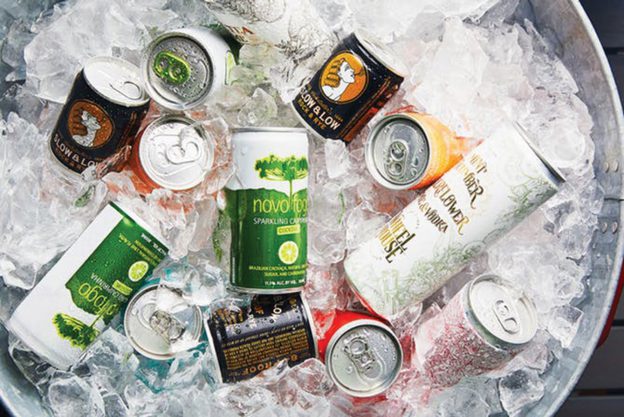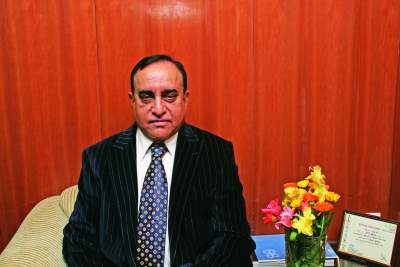The Advertising Standards Council of India (ASCI) banned surrogate advertising of liquor during India’s showstopper event – Indian Premier League 2021 which however, got truncated, due to some players and franchise staff testing positive. Talks are on to hold the unfinished spectacle in the United Arab Emirates, like it did in 2020 without crowd attendance, to be viewed on a broadcast platform.
It was during 2020 IPL that surrogate advertising was active on television and digital medium, particularly OTT (over the top), the latter in the absence of clear guidelines. “The IPL broadcaster for TV has confirmed to the ASCI that all advertisements are checked for CBFC clearance so that they are not in violation of the Cable Television Networks (Regulation) Act, 1995 (CTNR). Keeping that in mind, the ASCI processed complaints on advertisements appearing in OTT, digital and print media,” ASCI said. The association suo motu took up 14 complaints and some of the advertisers withdrew the ads.
Brand extensions have some leeway
The CTNR rules prohibited the direct or indirect advertising of cigarettes, tobacco products, wine, alcohol, liquor or other intoxicants in 2009. The Information & Broadcasting Ministry, however, allowed advertisements of products even if they shared a brand name with a liquor or tobacco product so long as it wasn’t a manifestation of the prohibited product. Advertisement of brand extensions of liquor and tobacco products is permitted under CTNR, provided the product sold under the brand extension does not make direct or indirect references to the prohibited product, it is distributed in reasonable quantity and is available in a substantial number of outlets, and the proposed expenditure on the advertisement of the brand extension product is not disproportionate to the actual sales turnover of that product.
ASCI guidelines for brand extensions
The Advertising Standards Council has ‘Guidelines for qualification of brand extension product or service’ wherein for an advertisement to qualify as a genuine brand extension advertisement (by implication, not surrogate), the in-store availability of the product sold must be at least 10% of the leading brand in the product category or sales turnover of the product must exceed `5 crores annually or `1 crore in the state where the product is distributed.
Age-old question, whether to allow liquor advertising or not?
However, the question that keeps raking up is an age-old issue – whether to allow liquor advertising / surrogate advertising or not? And the topic is universal leading to unending debates. Across continents, there are countries where liquor advertising is allowed and then there are as many countries that have banned / restricted advertising of alcoholic beverages. In the United States, spirits advertising has self-regulatory bodies that create standards for the ethical advertising of alcohol. In the UK, advertising for alcoholic drinks follows a code enforced by the Advertising Standards Authority, while the packaging and branding of the products is subject to self-regulation. In Thailand, alcohol advertisements are allowed but with a warning message. In South Korea, public advertising is allowed only after 10 p.m. In the Philippines, alcohol advertising comes with a disclaimer ‘Drink Responsibly’. In India, liquor advertising was banned after the Ministry of Health found that cigarettes and liquor had adverse effects on a person’s health. However, advertisements for liquor brand extensions can run on television only if they have a certificate from the Central Board of Film Certification. That led to the companies (manufacturers and also advertising agencies) becoming innovative with ‘surrogate advertising’ wherein unrelated products with the same brand name is manufactured / advertised and sold, only to ensure that the liquor brand name stays right on top of consumers’ minds. Unrelated products include mineral water, music CDs, soda, sports accessories and anything that can be advertised.
Active on digital media
The question here is when liquor companies are active on social media which is a major influencer, an indisputable force and not to mention its enormous reach, the whole idea of banning on OTT and television smacks of hypocrisy. It is indeed paradoxical that excise which is one of the top revenue earners for most states, going up to 15 % of the overall revenues, is not allowed to be promoted. There is a school of thought that believes if a product is allowed to be manufactured and sold, it should be allowed to be advertised, but that is over simplification as it will certainly be like opening up the Pandora’s Box.Gokul Krishnamoorthy who worked with an agency that handled United Breweries in an opinionated article in the Financial Express says “While ASCI banning surrogate ads by liquor brands during the curtailed IPL 2021 was a welcome move, it prompted a question in many minds. What explains the existence of a team called ‘Royal Challengers Bangalore’? One can’t help but remember that the current captain of the team Virat Kohli is idolised by a young boy in a health beverage commercial, among many others. Royal Challenge is a brand of whisky owned by United Spirits, which also owns the Royal Challengers Bangalore cricket team. If scale of presence, volume of advertising, market share and the likes are the key metrics by which one decides whether or not an alcohol brand can advertise its extension, then Royal Challengers Bangalore has no problem at all.” He goes on to add “The only seeming solution then, albeit rather simplistic and overarching, is that if a brand is present in a category where promotion is banned, it should not be allowed to promote itself in any context. It should be denied the right to promotion, whether for its shared corporate brand, for its extension, for its event, for its cricket team or whatever else.” Since such conundrums exist, there are those who feel that we need to shed this hypocrisy and accept that people do drink and reaching them is a legitimate part of a company’s business plans. The companies should be allowed to promote safe, moderate and responsible drinking. In states where there is prohibition this issue does not crop up at all. With digital media coming into play, some players have been advertising brand extensions as the CTNR does not apply to advertisements over the internet. This is changing as we have seen the government bringing social media under control. The digital medium is pretty nascent and governments are grappling with policies to rein in the medium. Indian liquor companies have been using social media to promote their brands. The UB Group recently tied up with a digital content company which produced a web series titled ‘Pitchers’, a five-part series on four friends trying to launch a start-up. With over 10 million viewers, the show got a rating of 9.7 out of 10 on internet movie database website, making the new concept of advertising, going beyond surrogate advertising. As rules become stricter, liquor brands will look at different channels – events, experiential, branded content and in-film, like ‘Pitchers’. As manufacturers need to advertise, one way or the other as to get their products sold, they have been innovative in how to get the message across.







 Right from handpicking the choicest of grapes from the finest vineyards in France to distilling the spirits and maturing them for 5 years in fine oak casks, Henry X special reserve Brandy XO weaves its lingering magic on the discerning palate, says P. K. Das, CEO, The Accord Group.
Right from handpicking the choicest of grapes from the finest vineyards in France to distilling the spirits and maturing them for 5 years in fine oak casks, Henry X special reserve Brandy XO weaves its lingering magic on the discerning palate, says P. K. Das, CEO, The Accord Group.
 The company’s other brands include Age de Oak (Premium), Holandas Spanish VSOP Brandy, Missionary Monk, Royal Accord Gold, Blender Magic, King Nap, Accord French, Wonderland, Accord No. 1, and Evening Walker.
The company’s other brands include Age de Oak (Premium), Holandas Spanish VSOP Brandy, Missionary Monk, Royal Accord Gold, Blender Magic, King Nap, Accord French, Wonderland, Accord No. 1, and Evening Walker.





 The global premium spirits company brings its finest and the most popular Japanese whiskies – Yamazaki and Hibiki – and Japanese craft gin – Roku – to India with the launch of The House of Suntory portfolio.
The global premium spirits company brings its finest and the most popular Japanese whiskies – Yamazaki and Hibiki – and Japanese craft gin – Roku – to India with the launch of The House of Suntory portfolio.
 “We are thrilled by the appreciation that Hibiki and Yamazaki have received from consumers worldwide, and their popularity among spirits aficionados in India. The growing premiumisation of the Indian market and the appreciation for finely crafted spirits made this the right time to launch these brands, along with Roku gin. Indians today are well-travelled and exposed to global trends, which inspired the creation of Oaksmith for whisky lovers in India,” says Neeraj Kumar, Managing Director of Beam Suntory India. On Oaksmith and Oaksmith Gold, he said, “The beautiful blend incorporates years of tradition that the Beam Suntory family upholds while showcasing Shinji-san’s award-winning blending capabilities making it a whisky that, quite simply, no one else could possibly create.”
“We are thrilled by the appreciation that Hibiki and Yamazaki have received from consumers worldwide, and their popularity among spirits aficionados in India. The growing premiumisation of the Indian market and the appreciation for finely crafted spirits made this the right time to launch these brands, along with Roku gin. Indians today are well-travelled and exposed to global trends, which inspired the creation of Oaksmith for whisky lovers in India,” says Neeraj Kumar, Managing Director of Beam Suntory India. On Oaksmith and Oaksmith Gold, he said, “The beautiful blend incorporates years of tradition that the Beam Suntory family upholds while showcasing Shinji-san’s award-winning blending capabilities making it a whisky that, quite simply, no one else could possibly create.”
 On the rising popularity of gin in India, George Kumekawa, Representative, The House of Suntory, said, “In recent years, we have noticed a strong trend among Indians to opt for premium and craft gin as their spirit of choice as it has a softer flavour profile which is easier on the throat and refreshing in its appeal – perfect for brunches and refreshment occasions. With the introduction of Roku gin in India, we are looking to further build the market for both gin as well as craft spirits to help enthusiasts discover new tastes and experiences.”
On the rising popularity of gin in India, George Kumekawa, Representative, The House of Suntory, said, “In recent years, we have noticed a strong trend among Indians to opt for premium and craft gin as their spirit of choice as it has a softer flavour profile which is easier on the throat and refreshing in its appeal – perfect for brunches and refreshment occasions. With the introduction of Roku gin in India, we are looking to further build the market for both gin as well as craft spirits to help enthusiasts discover new tastes and experiences.”
